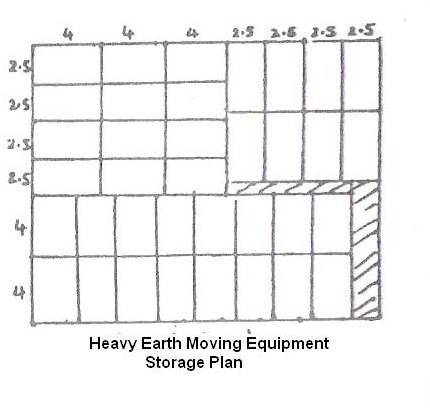Cargo Ship Plans: How much cargo can a cargo ship carry?
Introduction
We have already taken a look at the importance of cargo storage on a ship in a proper manner and in order to ensure safety of life and machinery, as well as the common types of cargoes carried on board various types of ships. Having understood the basic theoretical concepts it is now time to take a look at an actual cargo plan for a ship and how much cargo can a cargo ship carry and where? All this would help to clear the concepts outlined in the previous articles mentioned above.
Real Ship Example
Given below is the data for storage space of a real ship (actual name omitted).
- Cold chamber port side with the volume of 317.1 m³
- cold chamber starboard side with the volume of 313.1 m³
- locker for specialised cargo with the volume of 106.6 m³
- Tween deck having dimensions 22 x 7 x 3 m
- Lower hold having dimensions 22 x 18 x 8 m
of course there are other spaces on the ship as well, but for this example just assume that they do not exist since that would lead to complicated calculations.
Now let us suppose that the following types of cargoes need to be transported in this ship and that the following data is available regarding these cargoes.
Meat without bones
- Quantity 175 tonnes
- Stowage factor 1.74 m³/ton
- Broken stowage 4%
- discharge port 2nd
Cases is filled with tea leaves
- quantity 220 tonnes
- stowage factor 1.90 m³/ton
- broken stowage 10%
- discharge port 1st
heavy earthmoving equipment
- size 4 x 2.5 x 2.5 m
- quantity 36
- discharge port 1st
Machinery
- quantity 750 tonnes
- stowage factor 1.5
- discharge port 2nd
Animal bones
- quantity 500 tons
- stowage factor 2.25
- discharge port 2nd
Frozen seafood
- quantity 160 tons
- stowage factor 1.95
- discharge port 2nd
Special cargo of coins
- quantity 350 tonnes
- stowage factor 0.3
- discharge port 2nd
Preparation of the cargo plan
After the navigating officer comes to know of the quantity and types of cargoes to be loaded, the work of formulating a cargo plan begins immediately. The officer in charge takes a look at the properties of types of cargo involved and chooses the stowage location according to that.
In the above example it is clear that frozen seafood and meat cargo would have to be stowed in refrigerated compartments for obviously reasons that they do not get spoiled during the voyage. Other cargoes such as tea leaves cannot be stored together with animal bones because of stinking smell which will affect quality of tea leaves.
The port of discharge has also to be taken into account since cargo which has to be unloaded earlier needs to be at a more convenient location to unload. Last but not least the volumes of cargoes need to be checked against the available space in order to find out if it can be stowed comfortably taking broken stowage into account.
The final cargo plan which was prepared from the above data of available cargo space/dimensions and the cargo properties has been shown in the images below. The left hand image shows the location of cargo while right hand image shows the arrangement of the 36 pieces of heavy earth moving equipment.

Logic and Calculations
- Locker for specialized cargo can contain 106.6 m3 and volume of special cargo coins is 350 * 0.3 = 105 m3, hence will fit into the same.
- Regarding two refrigerated cargoes, frozen seafood will occupy volume of 1.95 * 160 = 312 m3. So it can fit either in the port or starboard side cold chamber BUT since the other refrigerated cargo requires a volume of 175 * 1.74 + 4% = 316.7 m3, this cargo of meat without bones can only go into the port cold chamber, leaving the starboard side for frozen seafood.
- Tea leaves cargo will go into the tween deck compartment since it has to be discharged at first arrival port
- The heavy earth moving equipment, the machinery and the animal bones are stowed as per plan shown above in the lower hold. As you can see some area in the right hand side diagram shown by shaded lines is going waste but that is unavoidable since HEM equipment can only be stored in whole numbers and not in parts.
Hence we have seen how a cargo plan is formulated for a ship considering space, volume and other requirements.
References
Fenandes, E. (1993) Cargo Work. Mumbai: Marinez Enterprises
